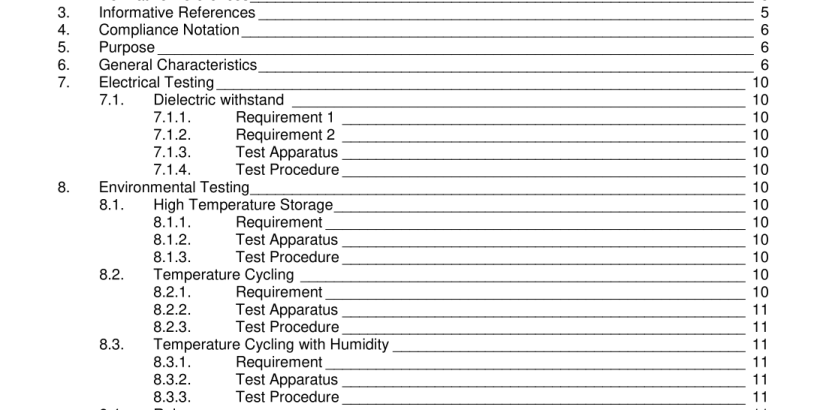ANSI SCTE 171-2016 pdf download.Passive Network Device (NID) Enclosure Specification
4. Compliance Notation
This word or the adjective“required’ means that the item is an absolute requirement of this specification. This phrase means that the item is an absolute prohibition of this specification. This word means the value specified shall never be used. This word or the adjective“recommended’ means that there may exist valid reasons in particular circumstances to ignore this item, but the full implications should be understood and the case carefully weighted before choosing a different course. This phrase means that there may exist valid reasons in particular circumstances when the listed behavior is acceptable or even useful, but the full implications should be understood and the case carefully weighed before implementing any behavior described with this label. This word or the adjective“optional” means that this item is truly optional. One vendor may choose to include the item because a particular marketplace requires it or because it enhances the product, for example; another vendor may omit the same item. Use is permissible for legacy purposes only. Deprecated features may be removed from future versions of the standard. Implementations should avoid use of deprecated features.
5. Purpose
The purpose of this specification is to recommend a standard set of design requirements for Network Interface Device enclosures which are used to mount and enclose drop components for outdoor broadband applications. The specification in no way should limit or restrict any manufacturer’s innovation and improvement. Innovations and improvements are encouraged and this specification may be adjusted when beneficial.
6. General
Characteristics All NIDs that meet the standards proposed by this document shall have the following characteristics and pass the tests and their requirements list herein. See Figures 1-5 for sample drawings of such NIDs.
1. Provide a secure demarcation connection point between the network provider wiring and the subscriber wiring.
2. May provide isolated access between the subscriber and provider within the NID itself.
3. The NID shall have an attached lid or cover.
4. Serve as a convenient test point for verification of coaxial cable, twisted pair or optical cable integrity.
5. Provide a weatherproof housing to increase the long term performance of broadband passive drop related components.
6. House and install coaxial, twisted pair or optical broadband related devices.
7. Provide weatherproof ports for coaxial cable, twisted pair and optical cable.
8. A 3/8” (9.5 mm) long, #6 self-tapping screw inserted into any mounting hole and tightened with a torque of 20 lb-in (2.26 N-m) shall not cause cracking of the mounting hole or mounting surface nor shall the threads strip.
9. The NID enclosure shall be able to contain an electrical bonding point or block.
10. The input cable port shall be sufficient in size to allow for cable with an outside diameter of ½- inches (12.7 mm). All other ports shall accept cable diameters up to 0.405” (10.29 mm).
11. The NID enclosure shall allow for the minimum bending radius of the type of cable used as specified by the manufacturer.
12. Mounting holes or slots shall be of such size and location as to allow orthogonal mounting of the device on a hole centerline pattern/grid of 0.500″ by 0.500″ +/-0.010” (12.7mm x 12.7mm +/- 0.25mm). No through holes are permitted so as to prevent water entry. Mounting holes must accommodate a #6 self-tapping screw, extended a maximum of ½-inches (12.7 mm) into the mounting surface.
13. The NID enclosure shall meet any applicable requirements of ANSI/NFPA 70 National Electrical Code (NEC). In addition, when the NID contains telephony demarcation, it shall meet, as a minimum, the generic requirements for Outdoor Telephone Network Interface Devices listed in this document where applicable.
14. All passive drop components used inside the NID enclosure must meet their applicable SCTE specification.ANSI SCTE 171-2016 pdf download
